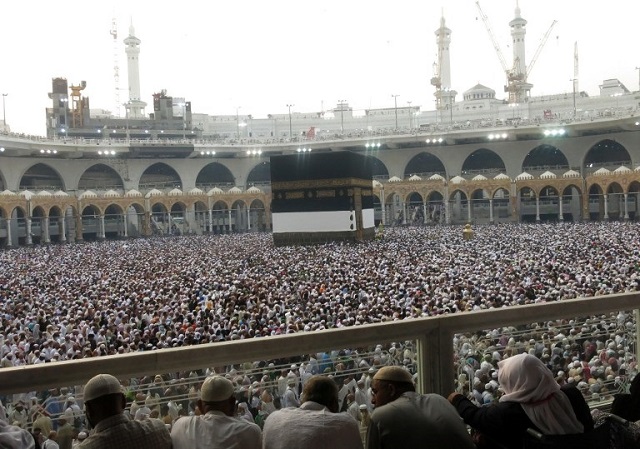
Mina, Saudi Arabia | AFP | With global oil prices flailing, Saudi Arabia is turning to another natural resource: billions of dollars gained from religious tourism as the kingdom hosts the annual hajj pilgrimage.
Shops line the packed esplanade of the Great Mosque of Mecca, one of the holiest sites in Islam, lowering their awnings only at prayer time and re-opening their doors minutes after the mosque empties.
Saudi authorities have reported 2.35 million Muslims are participating in this year’s hajj, the pilgrimage to the western Saudi Arabian city of Mecca that forms one of the five pillars of Islam.
Of those, around 1.75 million pilgrims from 168 countries arrived from abroad, according to the state-run SPA news agency.
Even at the foothills of Mount Arafat, where Muslims believe the Prophet Mohammed delivered his last sermon, carpet merchants were scouting for customers among the faithful.
“The money spent by pilgrims this year could be from 20 to 25 billion riyals (5.3 to 6.7 billion dollars),” said Maher Jamal, head of Mecca’s Chamber of Commerce and Industry — an estimated 70 percent increase from the previous year.
Jamal told AFP the jump in revenue stemmed from a 20 percent increase in the number of pilgrims compared with last year.
Each of them contributes on average thousands of dollars to the kingdom’s domestic economy, spending money on food, lodging, souvenirs and gifts.
– ‘Religion and commerce’ –
The increase in numbers is no accident but rather part of the ambitious Vision 2030 plan aimed at diversifying the Saudi economy, which was dealt a serious blow after oil prices plummeted in 2014.
According to historian Luc Chantre, whose research focuses on hajj during colonial times, “even before the advent of Islam, Mecca was a place for merchants”.
 The Independent Uganda: You get the Truth we Pay the Price
The Independent Uganda: You get the Truth we Pay the Price




All weather canvas awnings are in vogue these days.